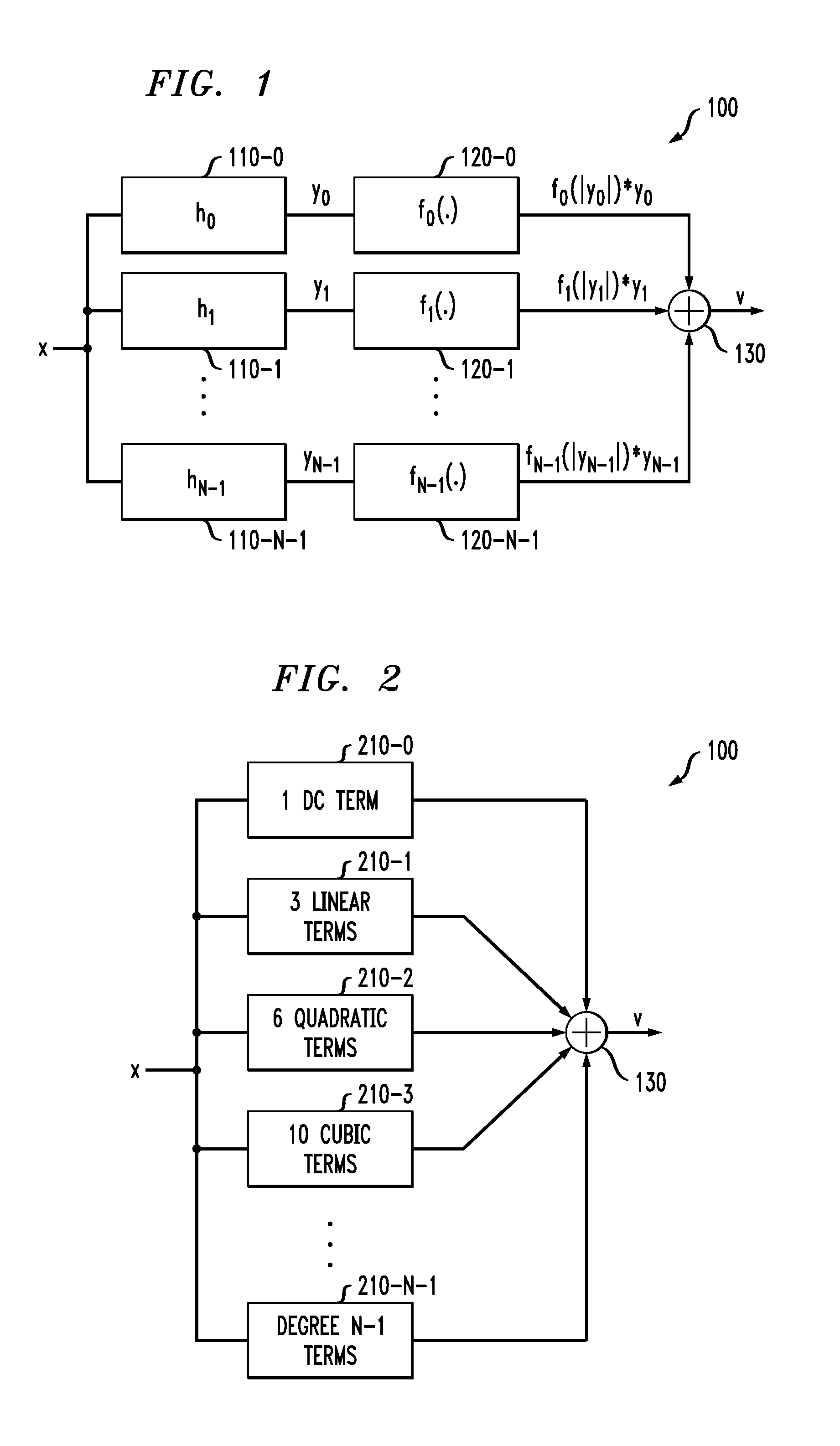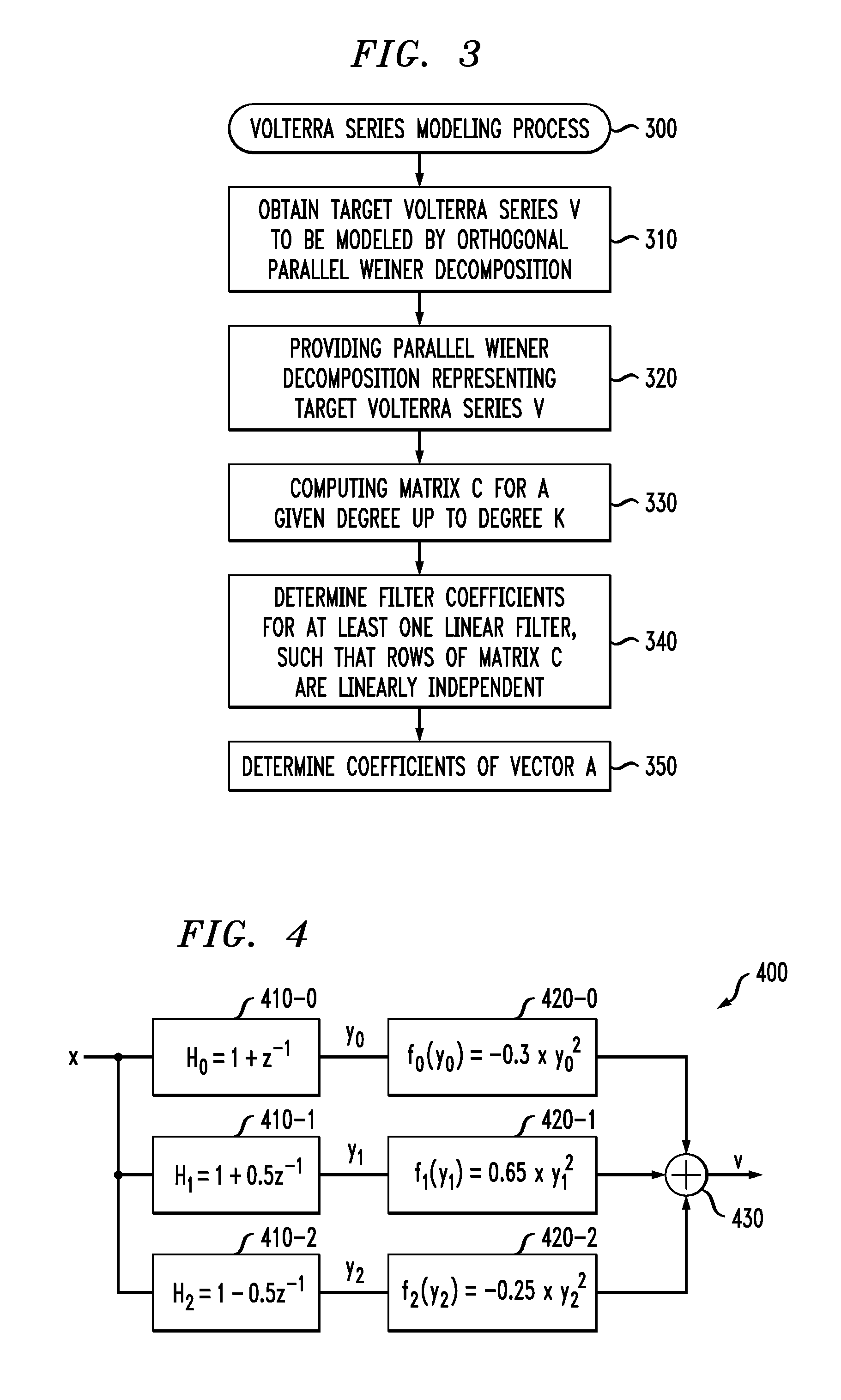Modeling of a Target Volterra Series Using an Orthogonal Parallel Wiener Decomposition
a technology of wiener decomposition and target volterra, applied in the field of digital signal processing techniques, can solve problems such as nonlinearity, reduce complexity, and challenge the capture of nonlinear distortion and memory effects of power amplifiers
- Summary
- Abstract
- Description
- Claims
- Application Information
AI Technical Summary
Benefits of technology
Problems solved by technology
Method used
Image
Examples
Embodiment Construction
[0027]Aspects of the present invention provide improved techniques for modeling a target Volterra series using an orthogonal parallel Weiner decomposition. Generally, a parallel Weiner decomposition comprises a linear combination of a plurality of linear filters in series with a corresponding static non-linear function. According to one aspect of the invention, discussed further below, techniques are provided for determining filter coefficients for the linear filters using a matrix C, such that the rows of the matrix C containing non-linear cross-products of coefficients of a corresponding filter, are linearly independent. In this manner, a target Volterra series can be reconstructed by a linear combination of the output of the static non-linear functions that process the filtered outputs.
[0028]For a more detailed discussion of non-linearity issues, DPD and parallel Wiener systems, see, for example, Lei Ding, “Digital Predistortion of Power Amplifiers for Wireless Applications,” Geo...
PUM
 Login to View More
Login to View More Abstract
Description
Claims
Application Information
 Login to View More
Login to View More - R&D
- Intellectual Property
- Life Sciences
- Materials
- Tech Scout
- Unparalleled Data Quality
- Higher Quality Content
- 60% Fewer Hallucinations
Browse by: Latest US Patents, China's latest patents, Technical Efficacy Thesaurus, Application Domain, Technology Topic, Popular Technical Reports.
© 2025 PatSnap. All rights reserved.Legal|Privacy policy|Modern Slavery Act Transparency Statement|Sitemap|About US| Contact US: help@patsnap.com



